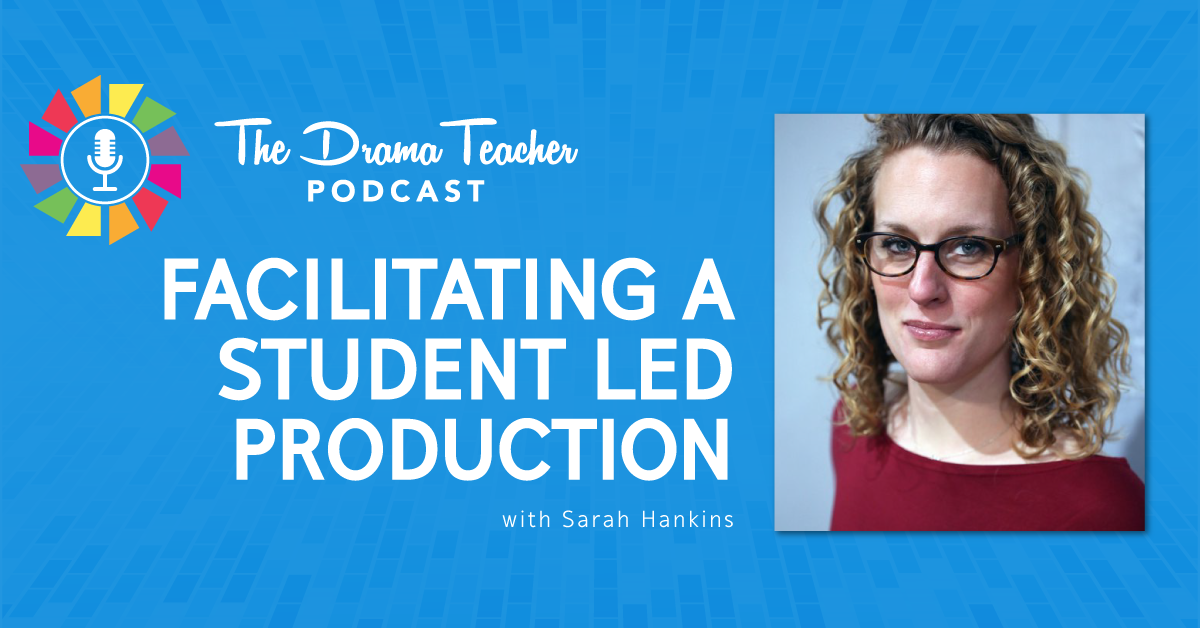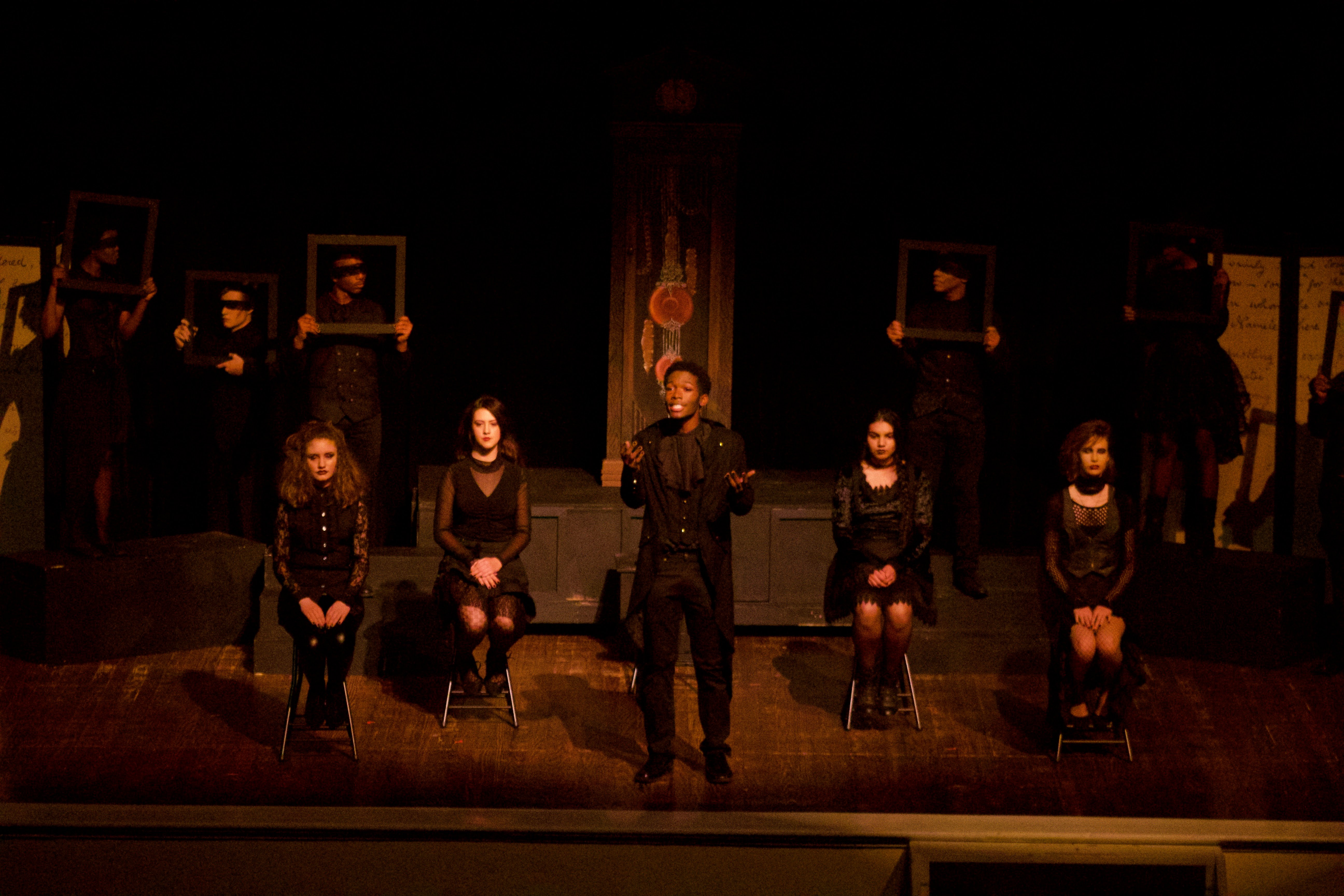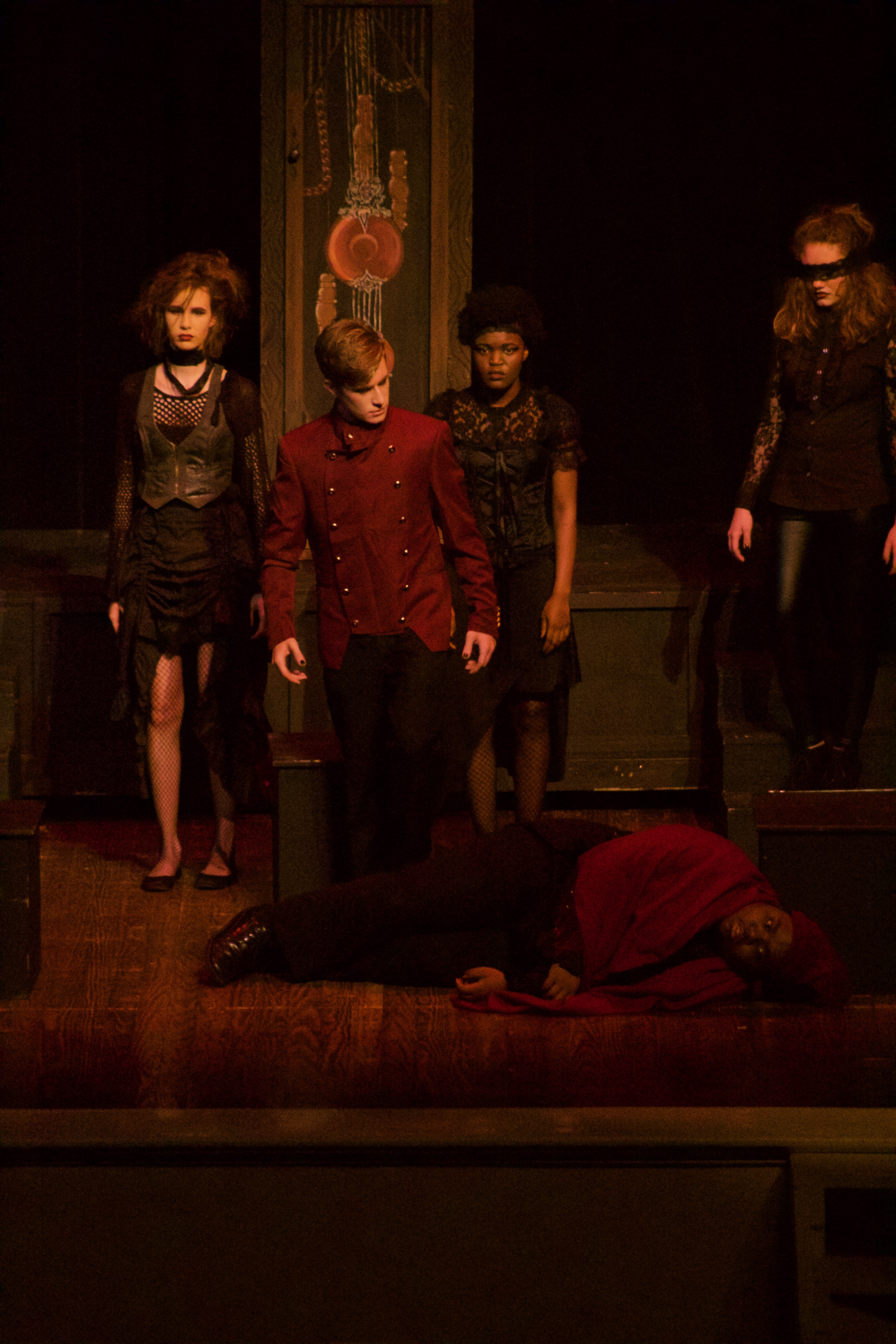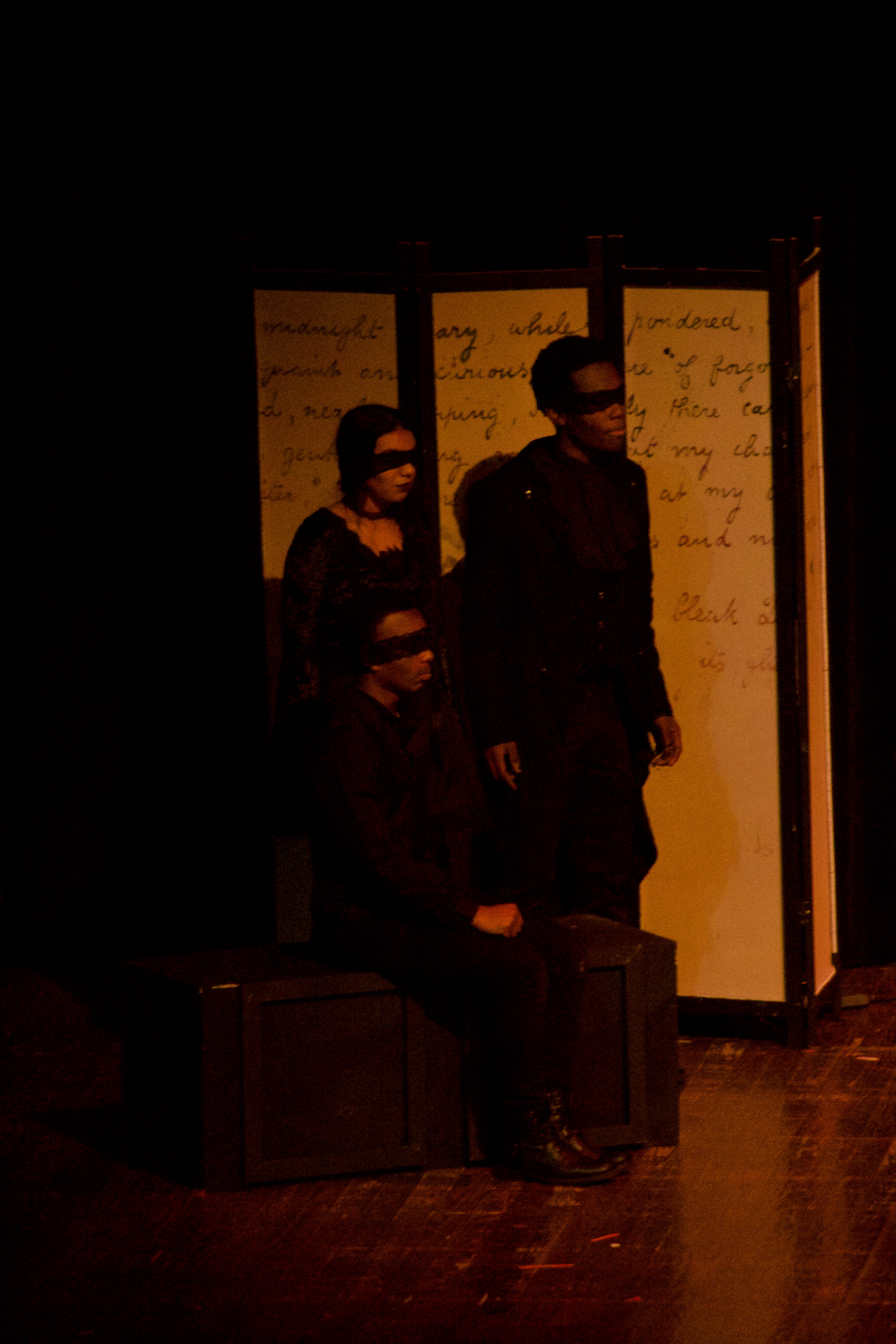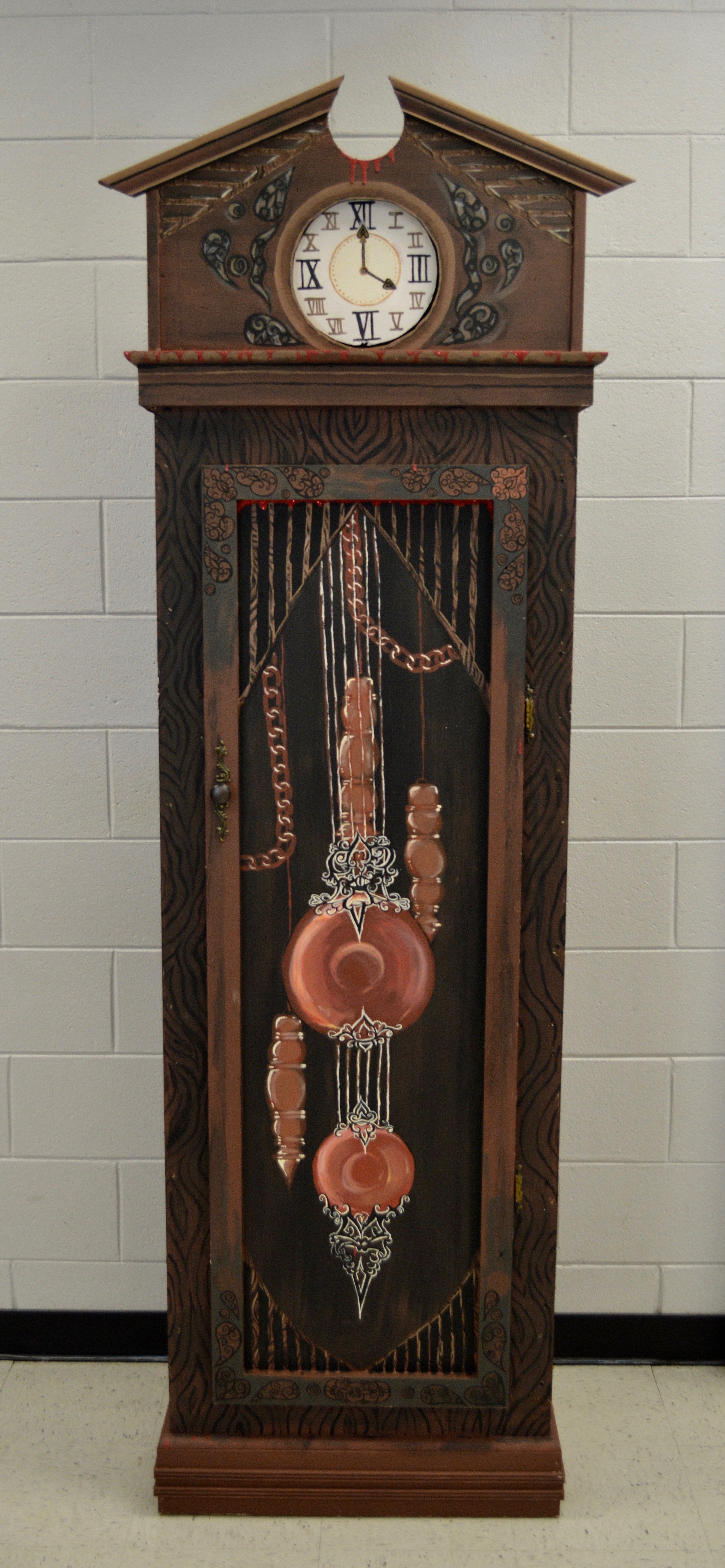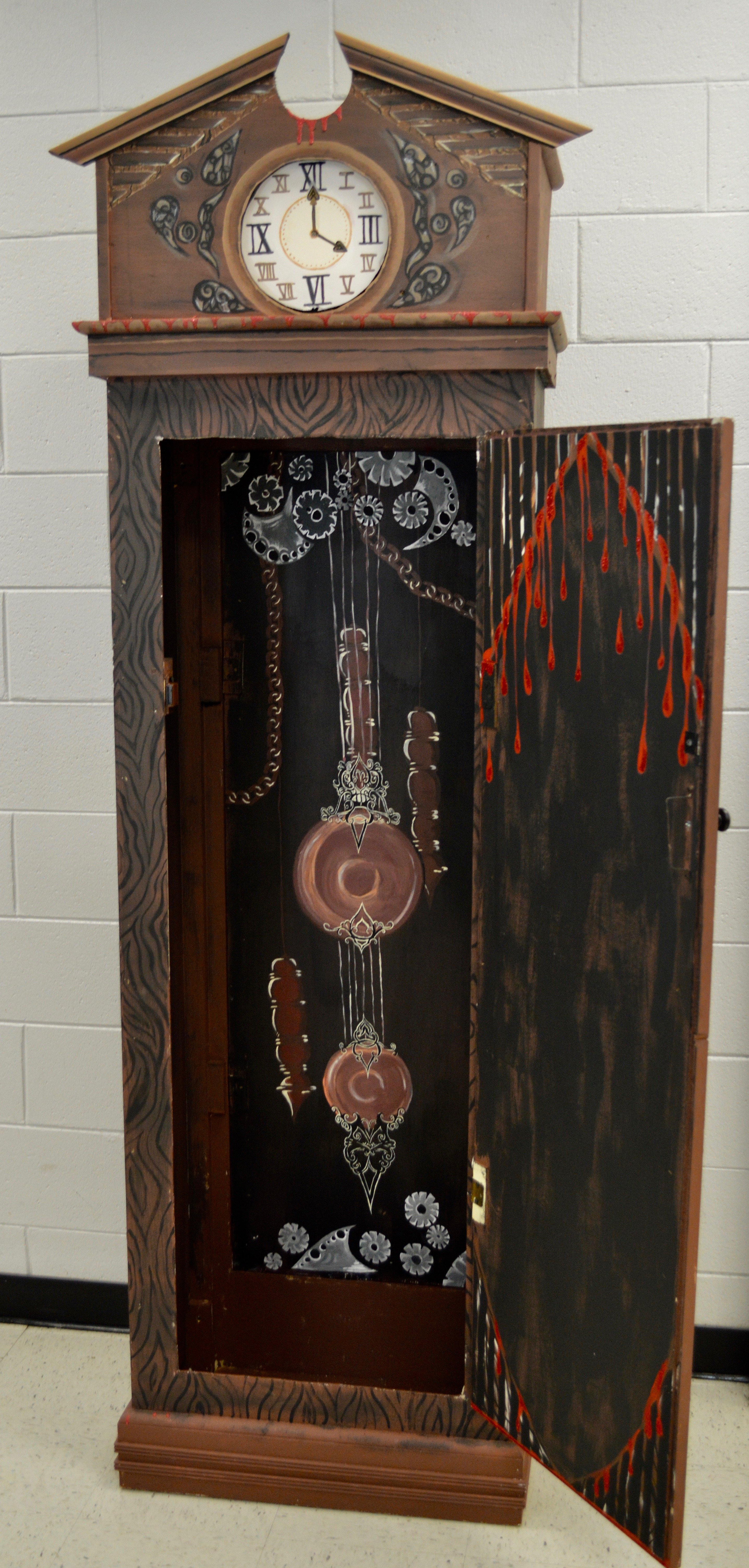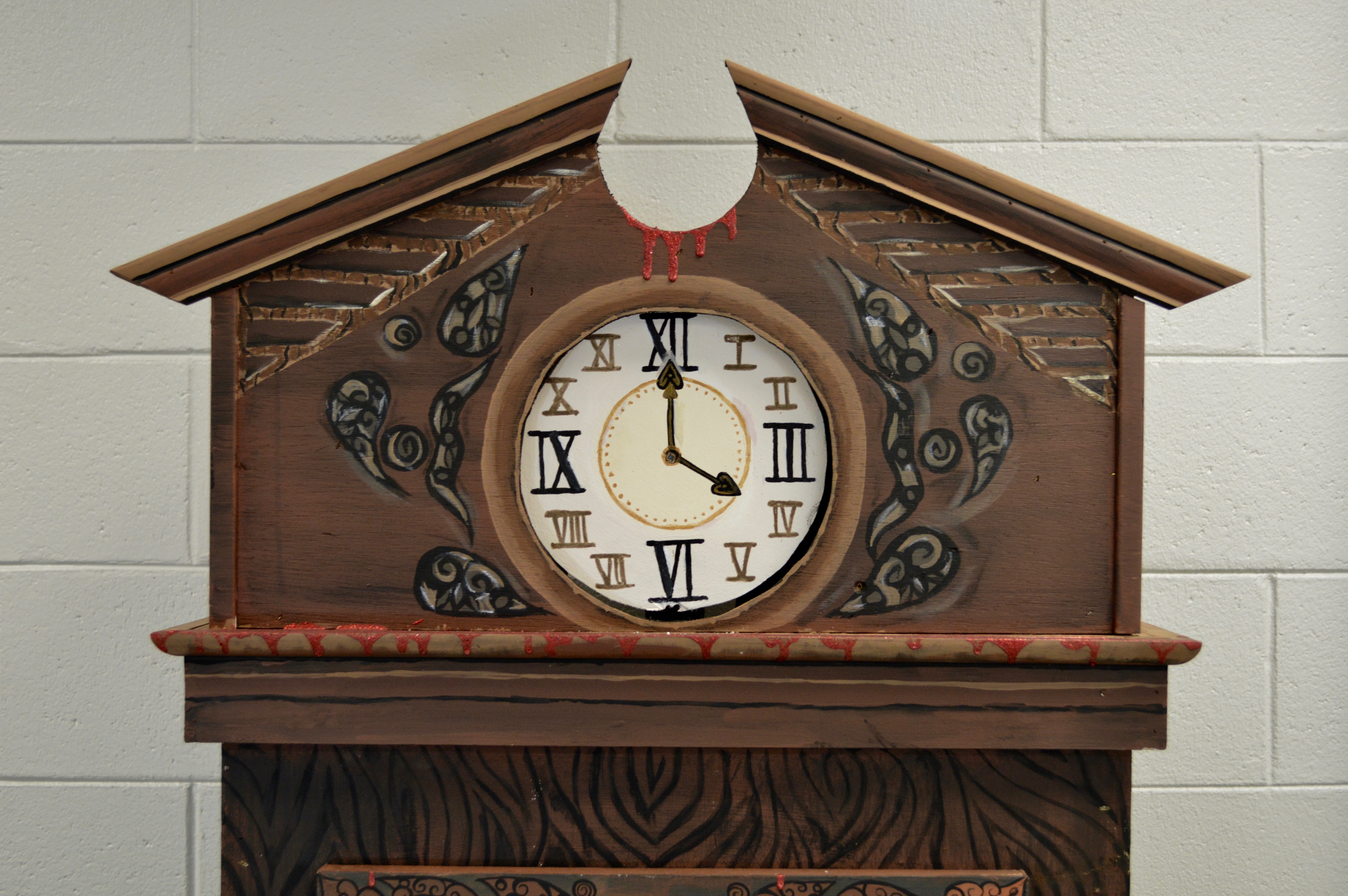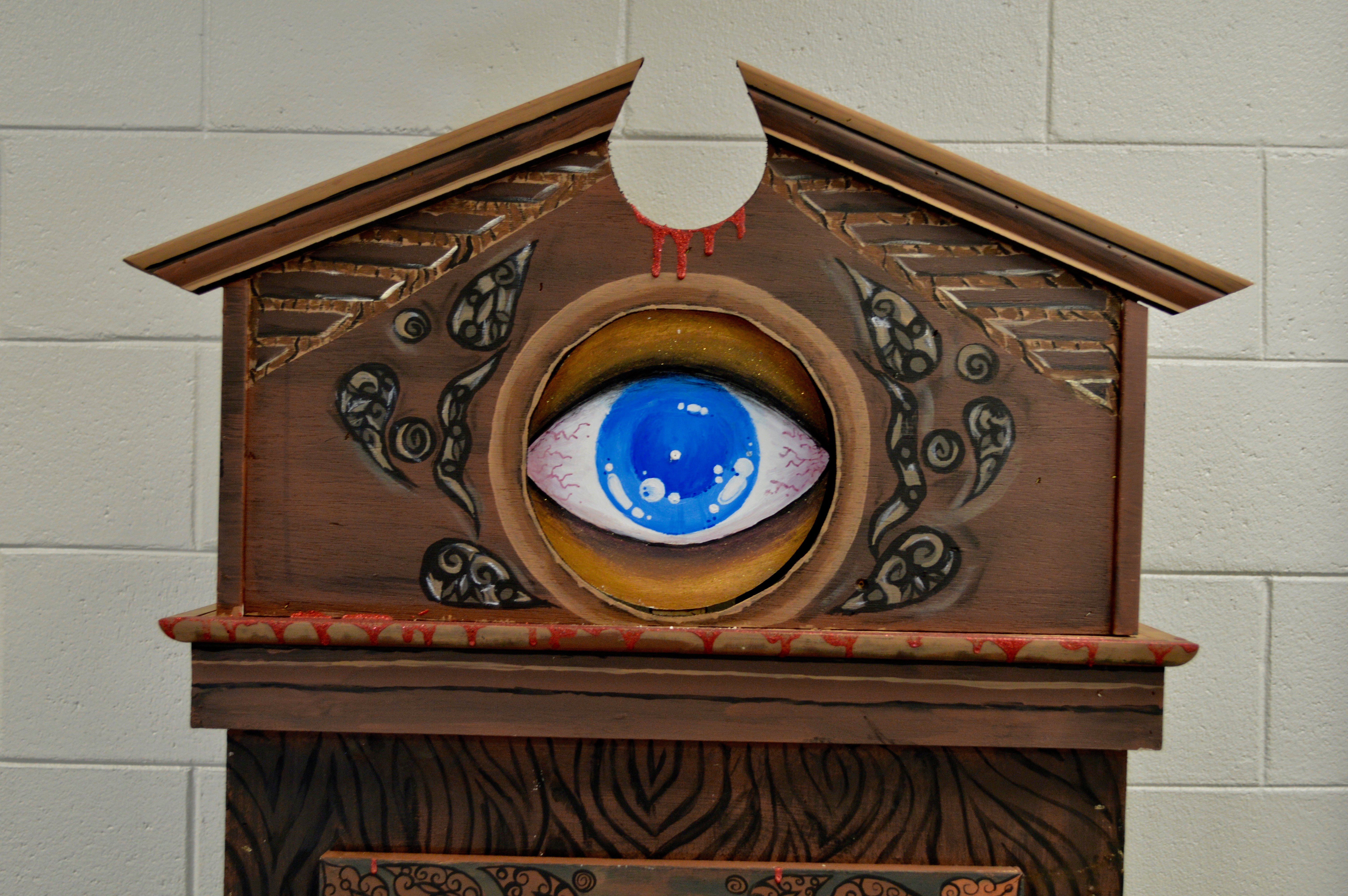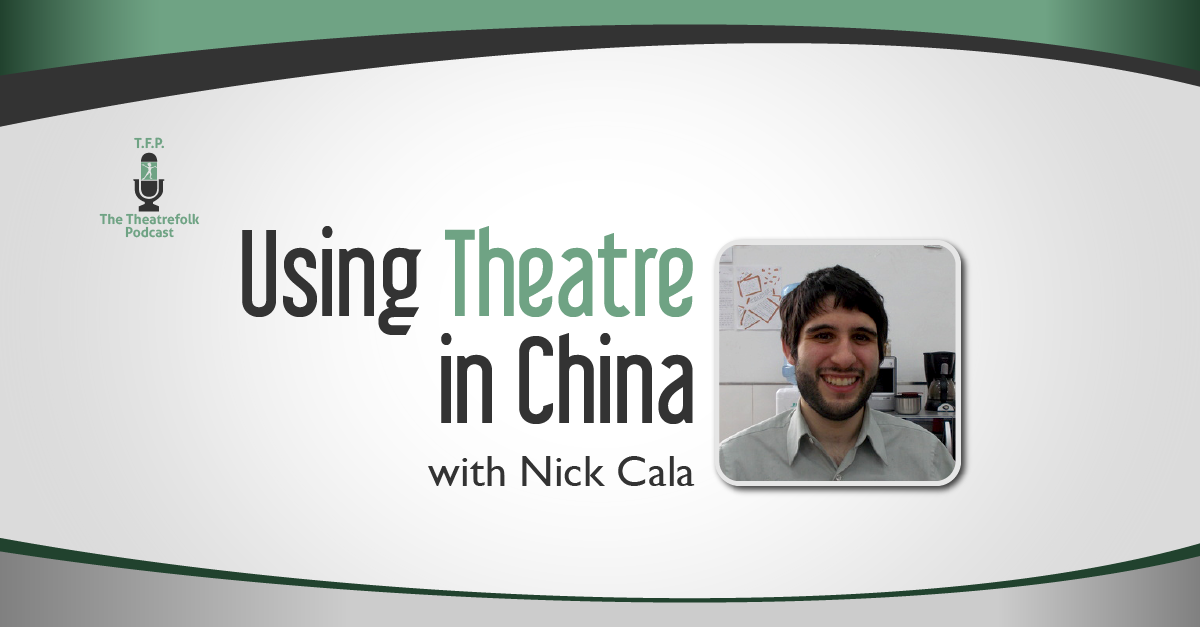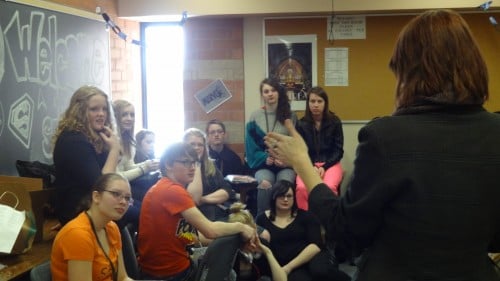Facilitating a student led production
Episode 210: A Facilitating a student led production
Have you ever sat back and let your students take control of a play? How do you let students learn from the struggles throughout the process, rather than making the decisions for them? Drama teacher Saran Hankins shares her experience facilitating a student driven production.
Show Notes
Episode Transcript
Welcome to the Drama Teacher Podcast brought to you by Theatrefolk – the Drama Teacher Resource Company.
I’m Lindsay Price.
Hello! I hope you’re well.
Thanks for listening!
This is Episode 210, and you can find any links to this episode in the show notes which are at Theatrefolk.com/episode210.
Today, we’re talking about student-driven work.
Have you ever sat back and let your students take control of a play? Now, how does that make you feel? Does that make you feel excited, nervous, nauseous? How do you let students learn from the struggles that they’ll find throughout the production process rather than making the decisions for them?
That’s exactly what our guest did with a recent production of Shuddersome, and it is a great conversation, so let’s get to it! I’ll see you on the other side!
LINDSAY: Hello everyone! Thank you for joining us!
I am here with Sarah Hankins.
Hello, Sarah!
SARAH: Hello!
LINDSAY: So, first of all, please tell everybody where in the world you are right now.
SARAH: I am at Clinton High School in Clinton, Mississippi.
LINDSAY: Nice, very nice, and how long have you been at your school?
SARAH: This is my third year teaching at Clinton High School.
LINDSAY: Oh, and how long have you been a drama teacher?
SARAH: This is my seventh year. I’m about to finish up my seventh year.
LINDSAY: Very good. Okay. So, seven years in, what is the thing that keeps you teaching?
SARAH: Honestly, the students because they change so much, and you just get to build these relationships with them that, you know, your normal classroom teachers don’t have. So, they honestly keep me coming back, day after day.
LINDSAY: Awesome. Well, that’s good. It’s good to have something that keeps you coming back. I know that’s not the case for everybody.
What was it that made you want to go into teaching and being a drama teacher?
SARAH: Well, funny thing is – and I just shared this story with students earlier – I actually swore I would never become a school teacher. And then, it just kind of hit me that I would be missing something, and my life wouldn’t be as fulfilled if I weren’t a school teacher.
But my mom is a 36-year veteran of public schools in Mississippi. She retired a couple of years ago. And then, my grandmother was also a teacher, and my sister is also a teacher. So, I guess you could say it runs in our blood.
LINDSAY: Oh, man! I can totally see it, though! Surrounded by teachers and go, “This is not for me.”
SARAH: Yeah. But, as far as theatre goes, when I was in ninth grade, I did a little bit of theatre here and there – at my church or in my school – but we had a community theatre called Brickstreet Players, and they needed a backstage hand and they asked me – this pipsqueak of a ninth grader to do that – and I got in and I met some wonderful people. And then, I met my mentor, and it just worked out where I found my passion.
And so, I’m able to utilize that passion. I was given the opportunity to teach theatre and it’s been a journey ever since.
LINDSAY: Awesome!
What’s the most memorable thing that your mentor has ever said to you?
SARAH: Oh, gosh! Probably that theatre can be summed up in one word, and that is “reaction” and that’s really what life is. It’s reacting to everything that’s around you because you’re not just one person. And so, that really helped open my eyes and helped me to start discovering who I was as a person. And then, in turns, accepting who I am as a person.
LINDSAY: That’s awesome. I like that.
I think that that’s the best thing that we can actually teach students onstage because, like, how many times have we seen, oh, kids are doing a scene and it’s just by rote. It’s like they’re saying, “Here’s my line. Oh, now, it’s not time to say my line. Oh, now, it’s time to move here!” as opposed to being in the moment and actually reacting to what someone is giving you.
SARAH: Absolutely.
LINDSAY: Awesome, awesome, awesome. Oh, that’s perfect!
Wow! I’m so glad we went down that path and I got to ask that question.
SARAH: I love it!
LINDSAY: We’re here to talk about a production of Shuddersome. I know about this – and this is why you’re here – because you have some beautiful pictures.
SARAH: Thank you!
LINDSAY: When I asked you about it, you said, actually, that your job for the show was to facilitate because it was mostly a student-led production.
SARAH: Yeah, it was. It was an experience.
LINDSAY: Ah! Well, let’s talk about that. That’s what we’re going to talk about. Let’s talk about that experience.
First of all, did your students choose the play? Did you choose the play? Did you know you were going to have a student-led experience from the very beginning? What was the beginning like?
SARAH: Initially, not. This group of students, most of them are seniors now. I was able last year to start an audition to competition class at the high school. And so, initially starting, I love it when students are able to do hands-on things, but you never really know, depending on what students you have.
But this particular group of students that were starting this endeavor, they had done a lot of comedy. And so, I like to challenge students, so we started looking at some more dramatic pieces.
We read several plays and we just came across Shuddersome and it just kind of fit. They love Edgar Allan Poe and we liked that, you know, there were so many different ways you could take it and go with it. And so, we had settled on that. It was kind of a mutual decision, settling on Shuddersome.
But then, as far as the student-led aspect of it, when we read it, they started coming up with all of these different ideas of what to do. You know, we kind of put it to bed, and then we had summertime. And then, we came back, and they had come up with even more ideas as we read it again to make sure that that was the show we wanted to work on.
And so, you know, it was kind of organic – them taking control.
LINDSAY: That’s kind of exciting. Yeah, that’s kind of exciting that they were the ones who had ideas. How was that for you when you realized that that was happening and that your best step would be to actually step away and let them take it over? What was that like for you?
SARAH: It was hard. It was exciting because I haven’t had a group of students be able to do that. It was hard in the fact that – and my students and I joke about this – we all have problems delegating, but it was great to know that the last two years, because a lot of these students are seniors, like I said – but the last two years, they actually retained some of the things that I’ve imparted, or they even noticed things that I as a teacher might not have known. “Hey! They’re actually watching and learning.”
I mean, it was nerve-racking. But, at the same time, it was just exhilarating, too.
LINDSAY: That’s awesome. I like that.
Well, it’s good. Everything should be a little bit of terror and a little bit of excitement.
SARAH: Exactly!
LINDSAY: So, if you’re just facilitating, you’re watching this happen, how did they divide up the directing piece? Did they direct each other? Did they decide who was going to direct each piece? Each scene? How did they do that?
SARAH: So, my job as a facilitator, I ended up being the – and I’m doing air quotes here – the “director” but then, as they were going throughout the scenes, as they were blocking the scenes, thy would come up with their own blocking or they would suggest this, or one would say, “Hey! Let’s do this!” And so, we would sit, and I would watch to see if it works. And then, it magically worked.
So, I was the facilitator, the director, but really not the director because I was just there to see if it worked and to share my experience because Poe is deep.
LINDSAY: And dense!
SARAH: I know! And he’s creepy and weird and wonderful and he’s bringing so many life experiences that some of these kids – thank goodness – haven’t experienced. And so, you know, I was able to help with that a little bit, too. But we’ve just played well off of each other.
LINDSAY: You know what? I really like that framework and I think it’s something good to sort of recap, particularly for anybody listening who is thinking about having student-led work for the first time, if you’re acting as not a director but an outside eye and a shaper. They’re the ones coming up with the ideas and then you’re the one saying, “Oh, that works great!” or “That doesn’t quite work. Try something else.”
SARAH: Or “Yeah, that’s exactly what it was.”
LINDSAY: Was it hard when it didn’t work to not give them the option? Did you end up doing that?
SARAH: Well, in life, you fail, and that’s one thing that I like to teach my kids – that sometimes, what you try is not going to work. But what happened is, when they were in synch, when it didn’t work, you know, sometimes, “Okay, that didn’t work. Well, let’s try it this way.” or “Let’s try it this way!” or “Hey! That almost worked, so maybe that didn’t work, so let’s take what did work and utilize it and come up with another way to do it.”
And so, it was hard, yes. But, once again, it just proved how well these students could work together as a group.
LINDSAY: I think that’s probably pretty key, too, if you’re thinking about doing this – to really sort of not analyze your group but certainly assess your group who’s coming in and how well do they work together.
SARAH: Yes.
LINDSAY: I’ve seen many of the other side where students don’t work well together and when they go down that road, it’s a bit of a nightmare.
SARAH: It is.
LINDSAY: For sure.
So, they were the ones coming up with the ideas. You were the one shaping. How about for an overall vision? Because there’s a very defined vision and look to your play. How did that come about?
SARAH: Once we had decided on Shuddersome, we sat down and we casted out our vision. We broke down each individual part – about set, about costumes. Fortunately, I have some extremely talented students, artistically. And so, because it’s Poe, they wanted to do the creepy, but I made sure to emphasize that you can’t approach it as just creepy because then people are like, “Oh, it’s creepy,” and then kind of tune out. You’ve got to make it relatable.
Like I said, initially, we sat down and they’re like, “Okay, this will be cool. Maybe we could do it this way.” And then, it just kind of meshed as far as “Hey! Let’s keep the set as simple as possible, but let’s put this key figure of a clock in,” because, really, to them, a lot of the scenes focused around the element of time and how scary and how – I don’t know what word I’m looking for – how definitive time is.
LINDSAY: Yes, and that you can’t escape time. Time marches on, you know.
I’m just going to jump in briefly here and say we have these lovely pictures that we’re going to include in the show notes and there’s a real close-up of the clock which basically looks like it’s dripping blood on the inside. But, also, it has some beauty to it, too. You know, it’s very detailed.
SARAH: Exactly. That was completely students. The students and I talked about it, and then I did have an outside carpenter come in and help us. He does a lot of stage work for us. But, as far as the clock itself, it is completely student-painted. So, it’s completely student-designed, completely student-painted. The concept of the clock face and then where the clock face is, it actually turns to create the eye for The Tell-Tale Heart.
LINDSAY: No!
SARAH: Yes, it does. I’ll have to send you more pictures, I guess. But it can actually turn. There’s a lever in the back that turns it and it creates the eye – the evil, the eye. But it was a completely student thought of concept of you’ve got to include this eye somehow. How can we do it? But it also needs to be subtle enough where it doesn’t distract from what’s happening onstage. And so, they came up with the idea of a clock that the face turns and then the clock itself you can actually enter in from the back.
For Death during The Masque of the Red Death, he actually enters in from the back of the clock and then exits through the front of the clock onto stage to claim the prince’s life and then he exits back through at the very end.
LINDSAY: We’re having a moment of silence because I think that’s pretty awesome.
SARAH: The crazy thing is it really truly was, “Hey! Maybe we could do this? Maybe we could do that? Maybe we could do this?” and I just got to help them with the logistics of “Okay, this is how you would do that.”
For our costumes, I have, once again, a very unique and interesting group of students, and they love the gothic look. And so, we were able to talk about that because they wanted to keep that dark somber mood from Edgar Allan Poe. And so, we decided on gothic which is really just deconstructed Edwardian Victorian clothing.
LINDSAY: Absolutely.
SARAH: But then, we were able to talk about you can’t just do one piece. It needs to be layers and it needs to be multiple fabrics so it’s not just stale, and they came up with their own costumes. They would show me pictures, and some bought pieces, and then some found different pieces to add onto those pieces, some added trim or things onto their costumes. And then, the mask, one of my art students, the student that actually ended up kind of being our technical director a little bit hand-created the mask for The Raven and the mask for The Masque of the Red Death and fit it to the actors’ faces and papier-mâchéd them and had them done.
And then, they came up with the idea of what happens if we wear blindfolds because we want the shutters to be onstage the entire time, but we don’t want them to necessarily have a presence when they’re not in focus. And so, they thought, “Let’s do mask!” And then, when I was in Winter Guard here many, many, many years ago, we kind of had a similar idea and so we came up with the lace mask for the shudder so that they could retain their – not animosity but their individualness. I mean, it’s crazy just what that one round table discussion came up with and how it evolved from there.
LINDSAY: Well, not just that because it’s one thing to come up with ideas, and it’s another thing completely to execute on ideas.
I want to just change the direction into the whole notion of execution and you mentioned very briefly that you guys maybe have a little trouble delegating. So, ideas, and it’s very clear that the ideas that you’re expressing made it into the final product. So, how did your students go around the idea of “We’ve got these great ideas, who’s going to execute? When are they going to be due?” and that bugbear – delegation.
SARAH: Really, it was a group effort. They made sure that they knew the show was at this point in time. And so, you know, we need to have some pieces. Now, given, we were still probably working on set pieces the day before because – funny story- the students actually broke the clock about two days before we left for competition.
LINDSAY: Ow!
SARAH: And so, that was a fun story in and of itself. But, you know, they had their calendar and they just constantly checked in with each other to make sure that, you know, the clock is being painted or this has been painted or we need to have a set day. Once again, it was almost that organic feel.
LINDSAY: That’s pretty awesome. Those are special kids, man! Holy cow!
What do you think they learned from this process – basically, essentially, being in charge of everything – not just showing up to act? What did they learn?
SARAH: I think they learned ownership. I know they learned how to work together and take ideas from others and make ideas work.
I think part of it, with bits and pieces of it, they learned that it’s okay to fail and that, instead of looking at it as a failure, to take it and grow and not just sit there. You know, for many of them, the competitions that we took this show to, it was their first time ever to go to this type of competition. And so, they learned the idea of adaptability and flexibility.
After our first competition, we got some really good critiques from the judges. And so, they learned that just because a show is over doesn’t mean that we can’t do things to make it better. And so, they took the judges’ critiques and added even more to the set or even more to their costumes. They didn’t just stagnate with it. they kept growing.
There’s so many different things that I, the teacher, as a person in our world hope that these kids learned. But I think they learned a lot.
LINDSAY: Yeah, and to take it with them in whatever they do. You know, the lesson of adaptability is one of those skills that is pretty helpful.
SARAH: Necessary.
LINDSAY: Necessary! Absolutely!
What did you learn as a teacher watching this process?
SARAH: That students grasp more than we think they do and that there is a time and a place to hold our students’ hands, and then there is a time and a place to let them explore and to let them fail and to let them grow. And that, if I’m doing my job and doing my job well, you know, that they are able to do this.
Just you stop, and you think about it and there really aren’t words for it.
LINDSAY: Well, it’s a pretty amazing thing. Well, isn’t that the outcome? That should be the outcome of all teaching – that they can actually do it on their own. That means you did your job.
SARAH: Yeah. And, once again, it’s a scary, terrifying, wonderful feeling.
LINDSAY: That’s pretty awesome.
Okay. If you have, down the road, another group where you look at them and you go, “Okay, I think these guys could do it,” what would be one thing that you would change about your process?
SARAH: Maybe have more things written out like a calendar. And then, making sure that we think we’re ahead of the game, but adding one or two or maybe even three weeks on so that, when we run into hurdles, we’re not going to fall face flat on the ground.
LINDSAY: Oh, there’s that time thing again.
SARAH: Yeah!
LINDSAY: It’s after you. It’s after you!
SARAH: If only there were more time.
LINDSAY: Every day, I wish I had more time. There’s never enough!
Okay, as we wrap up here, there’s a lot of people that listen who might be going, “Maybe this is something that I can do with my students.” What would be one piece of advice to someone acting as the role of facilitator? If someone says, “Hey, I want to be a facilitator of my next student-driven play,” what would be the one thing you would say to them?
SARAH: Make sure that you listen to the students. Make sure you are always encouraging them no matter what happens. You know, just listen and encourage and continue to help them in whatever way you need to help them in. Also, don’t be afraid to hand over the reins.
LINDSAY: I think that’s probably the big one, isn’t it? It’s like, “Ah! I’m supposed to be in charge!” But you know what? I don’t think it’s a bad thing to not be in charge. Let someone else do it for a while. It’s okay.
SARAH: Yeah.
LINDSAY: Well, you know, I love student-driven stuff. I love student-written stuff. I think that these are the skills and the experiences that students have when they are the ones who are coming up with the ideas and executing on those ideas. I think that’s invaluable.
SARAH: Absolutely.
LINDSAY: Absolutely.
What’s next for you? What are you doing next? You’ve had this great experience. What’s next?
SARAH: Well, funny you should ask that.
Right now, we are in the midst of our spring production. We are doing The Myths at the Edge of the World.
LINDSAY: Hey! Awesome! Very cool!
SARAH: I know! I’m so excited about it, and the kids are loving it. We actually have a set day today. And then, right after that, I am going down to our junior high school, and we are doing Law and Order Nursery Rhyme unit with our junior high school so that we have a little bit of a feeder program. And then, we will be performing Shuddersome for the community because our community has yet to see it.
LINDSAY: Awesome. When’s that?
SARAH: That will be in May. We’re going to do it for our high school during a performance. And then, that evening, we’re going to do it for our community and our parents because the parents have yet to see it, too.
LINDSAY: That’s probably a good thing. They should probably see it – probably.
SARAH: Probably, they should.
LINDSAY: Well, please pass on my best “break a leg” to all your students. I think that I love the look of the show. I love the clock! Now, I’m just obsessed with your clock idea. I think that’s awesome.
All right. Thank you so much for sharing your experience and your story, and I hope that there’s more people out there who will let go of the reins and let students take the lead.
Thank you, Sarah!
SARAH: Absolutely! Thank you and thank you for this opportunity to just share what my students have done!
LINDSAY: Absolutely!
Thank you, Sarah!
Before we go, let’s do some THEATREFOLK NEWS.
So, the plays we talked about in the conversation, I’ve put the links in the show notes which can be found at Theatrefolk.com/episode210 or just head on over to Theatrefolk.com.
I’d also like to mention, if you’re looking for more connections with other drama teachers to learn about how you can implement concepts like the student-driven production in your classroom, I would love to recommend that you check out the Drama Teacher Academy.
DTA is the education arm of Theatrefolk just for drama teachers. We have an awesome community of drama teachers from all over the world who have so much to share through our regular professional learning community events and our private Facebook group.
If you have a struggle to ask about, or a success to share, you are not alone.
Learn more at DramaTeacherAcademy – all one word – DramaTeacherAcademy.com.
Finally, where can you find this podcast? Go to Theatrefolk.com/podcast and there you will see we are on iTunes, Android, Google Play, Stitcher, and more. That’s Theatrefolk.com/podcast.
And that’s where we’re going to end.
Take care, my friends. Take care.
Music credit:”Ave” by Alex (feat. Morusque) is licensed under a Creative Commons license.
